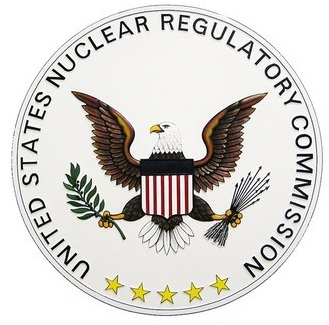Nuclear Reactors 376 - Failure of Nuclear Plant Operators in United States To Follow NRC Mandated Emergency Guidelines
I have mentioned in previous blogs that I am concerned about the degree to which the operators of nuclear power plants follow government regulations with respect to problems and accidents at nuclear power plants.
The United States Nuclear Regulatory Commission (NRC) is charged with making sure that U.S. nuclear power plants develop plans for what their workers must do in case of an accident. These plans include actions that must be taken at the plant as well as notification of local, state and federal authorities with respect to actions that should be take outside of the plant such as warning nearby residents.
The NRC has four levels of classification for emergencies at nuclear power plants. They are Unusual Event, Alert, Site Area Emergency and General Emergency with increasing severity. These are called Emergency Action Levels (EALs). Each site has a set of these pre-determined observable thresholds that tell the operators which of these levels a particular incident falls into. EALs include such things as readings on instruments, status indicators on equipment, results of analytical testing, and other types of records. Once a level has been established, a series of appropriate and timely responses are supposed to be triggered. EALs have been circulated since by the NRC to U.S. nuclear plant operators since 1976.
Successful emergency responses depend on correct identification of level and execution of proper actions in a timely fashion. The more severe the level of the incident, the more resources need to be brought to bear. If the severity of the incident is not properly identified, the correct responses are not given, and/or things to not happen on the proper schedule, then the necessary actions to protect the public may not be taken.
Unfortunately, despite the distribution of EALs to plant operators and the requirement that all U.S. nuclear plants have detailed and site specific emergency procedures that follow the EALs, these plans are not always correctly followed when incidents occur. Whether through lack of training, lack of maintenance of equipment, lax supervision or other problems, U.S. nuclear plant emergencies have not always been dealt with in a manner consistent with the mandated protection of the public and the environment.
In 2004 at the Perry nuclear plant in Ohio, it took the operators one hundred and sixty minutes to carry out the necessary readings. In the Surry plant in Virginia in 2006, an event was misclassified as to severity level. In River Bend in Louisiana in 2004 and 2005, the operators did not repair seismic detectors that were inoperable in spite of the fact that they were necessary of evaluation EALs. At the Summer plant in South Carolina, workers improperly altered their EALs to require unavailable information to declare an emergency level. In 2010 EALs at the Prairie Island plant in Minnesota and in 2011 at Crystal River 3 in Florida demanded radiation level readings that were not possible for the monitoring equipment.
These are only a few examples among many that illustrate exactly the concerns that I have expressing. If operators of nuclear plants cannot or will not follow proper procedures in evaluating the severity of nuclear accidents, then those nuclear power plants should be shut down to protect the public and the environment.
